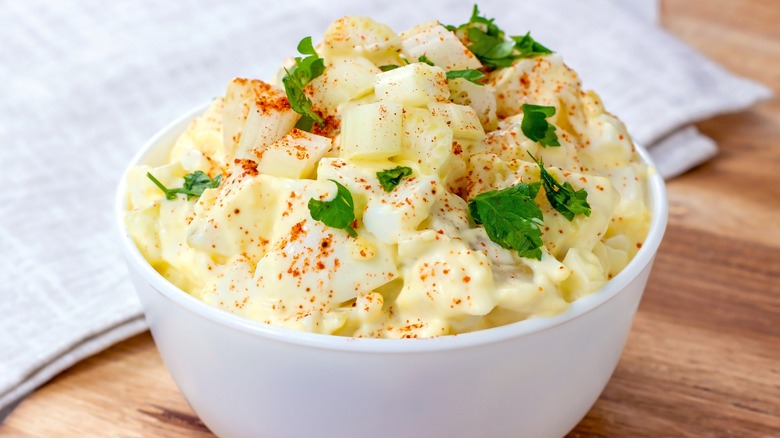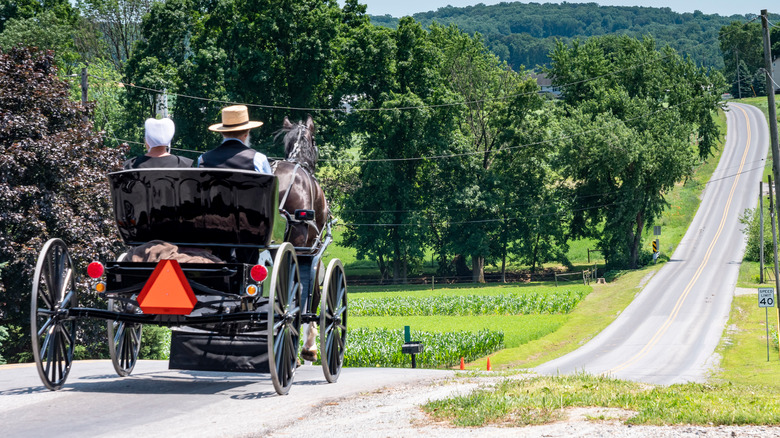What Makes Amish Potato Salad Different From Other Varieties
Potato salad is one of those dishes with seemingly endless regional variations, personal touches, and other differences, large and small. While they're all excellent choices and an easy side dish for any cookout, it can be hard to keep them straight, especially when it comes to specialized styles like Amish potato salad.
On the surface, there are a lot of familiar aspects of this variety. For example, the sauce that binds the salad together is made from a typical combination of mayonnaise and mustard. The main thing distinguishing the Amish variety is the level of sweetness, which is higher than many other versions. Many recipes call for 1 quarter to ½ cup of white sugar. This is a reflection of general Amish cooking culture, which relies heavily on sweet and sour combinations in its dishes. Traditionally, the sourness is provided by a few tablespoons of apple cider vinegar or even regular white vinegar, another relatively unique aspect of the style.
An Old-fashioned potato salad tradition
The exact origins of Amish potato salad are unknown, though they likely reach back far into the group's history in the U.S. and even in their historical homeland of Germany. The dish's modern popularity can at least, in part, be attributed to Walmart, which sells a premade version with packaging noting egg and sweet pickle. This latter ingredient isn't typical of Amish potato salad. In fact, some even argue the popular conception of Amish potato salad lends itself more to Walmart's ubiquitous interpretation than the traditional recipe.
It's worth remembering that Amish potato salad does share many similarities with other styles. Southern-style potato salad usually includes the sweet pickle mentioned above but less sugar and no vinegar. German potato salad also uses vinegar but in a sauce as an alternative to the mayo-slash-mustard base. While all this potato talk may have your mouth watering, make sure to avoid the common mistakes you're making with your potato salad before whipping up another batch.

